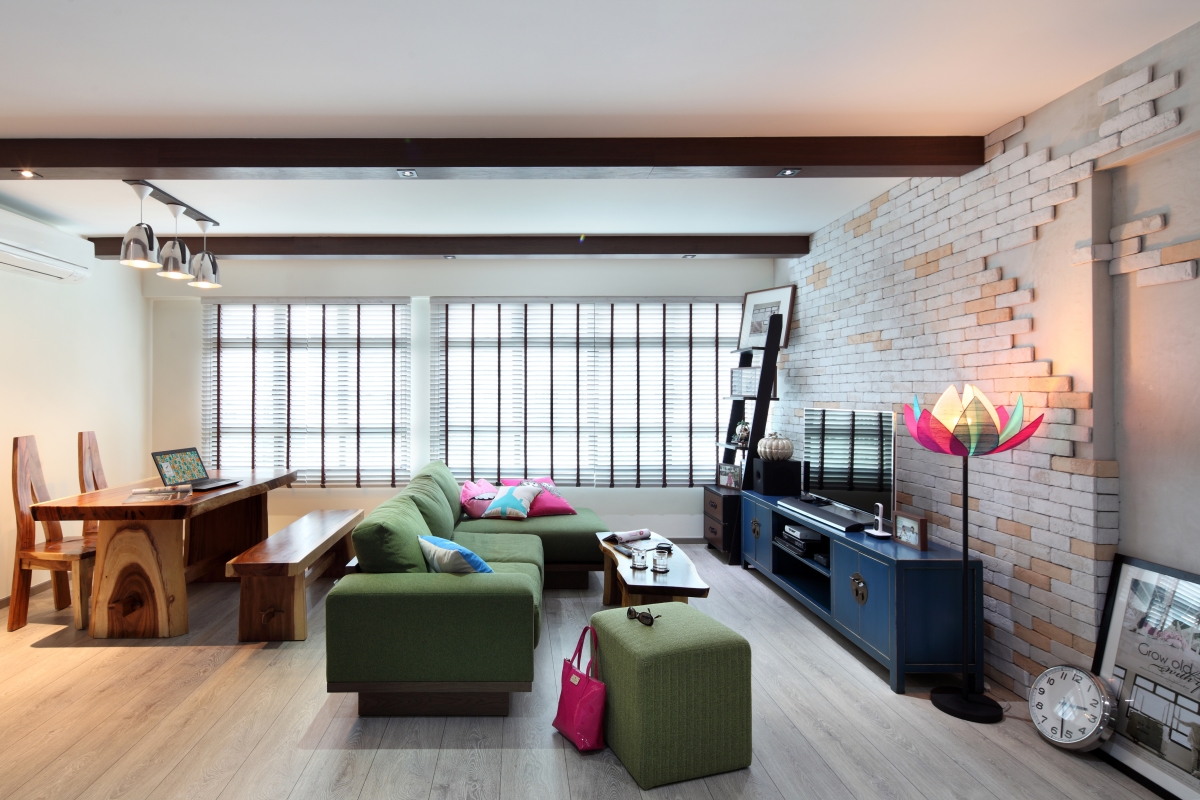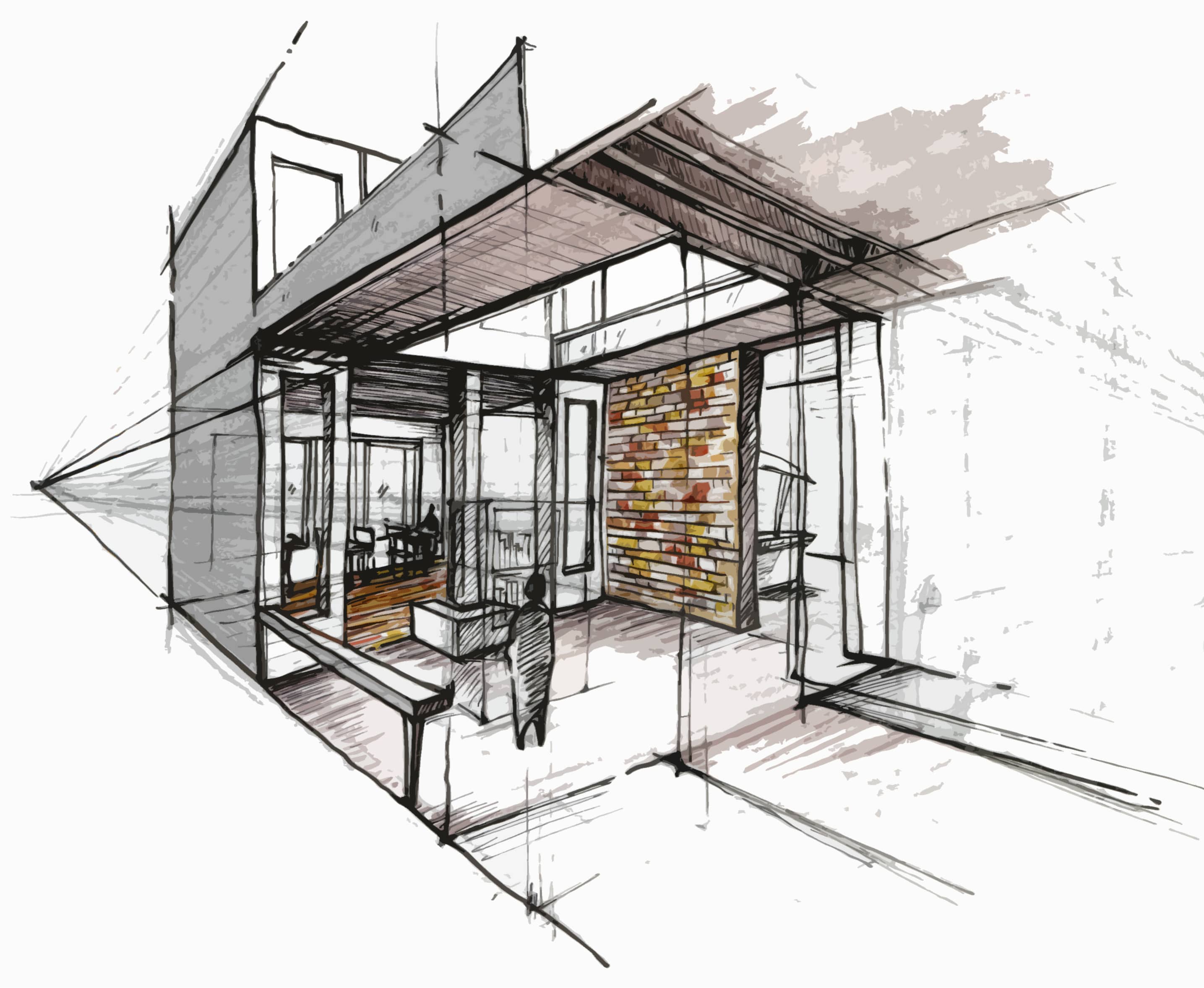Aluminium Bar: A Comprehensive Guide
Interior Design & Decor5 minutes read
204 views
204 views
Aluminium bars are versatile and widely used metal
products that have gained immense popularity across various industries due to
their exceptional properties. From aerospace to construction, automotive to
marine applications, aluminium bar
find use in numerous sectors. This comprehensive guide aims to provide in-depth
knowledge about aluminium bars, their properties, applications, and the
benefits they offer. Whether you're an industry professional or someone curious
about this remarkable material, this article will showcase the experience,
expertise, authority, and trust in the topic of aluminium bars.
Aluminium bars are long, solid pieces of metal made
from the non-ferrous element aluminium. These bars have a variety of
cross-sectional shapes, including round, square, rectangular, and hexagonal.
Aluminium, known for its low density and high strength, makes it a preferred
choice for a wide range of applications across diverse industries.
Types of Aluminium Bars
There are several types of aluminum bars available,
each designed to suit specific applications and requirements. Here are some
common types of aluminum bars:
· Flat Bars:
Flat aluminum bars have a rectangular cross-section and are available in
various thicknesses and widths. Aluminium
flat bar are commonly used for structural
applications, frames, and supports.
· Round Bars:
Round aluminum bars have a circular cross-section and are often used in
applications where a strong, lightweight, and corrosion-resistant material is
required, such as in construction, transportation, and manufacturing.
· Square Bars:
Square aluminum bars have a square cross-section, and they are used for various
applications, including machining, engineering projects, and architectural
purposes.
· Hexagonal Bars:
Hexagonal aluminum bars have a six-sided cross-section, providing excellent
strength and stability. These bars are often used in machinery, fasteners, and
other specialized applications.
· T-Bar (Tee Bars):
T-bars have a "T" shaped cross-section, with one flange at the top
and one at the bottom. They are commonly used in construction and structural
applications, where additional strength and support are required.
· Angle Bars:
Angle aluminum bars have an L-shaped cross-section, making them suitable for
structural applications, edge protection, and framing.
· Channel Bars:
Channel aluminum bars have a U-shaped cross-section and are often used in
construction and architectural projects for their strength and versatility.
· Hollow Bars (Aluminum Tubes):
Hollow aluminum bars are available in various shapes and sizes, such as round,
square, and rectangular tubes. They are commonly used in the manufacturing of
lightweight structures, automotive components, and heat exchangers.
· Bus Bars:
Bus bars are flat or rectangular bars used for conducting electricity, commonly
found in electrical distribution systems and power applications.
Each type of aluminum bar has specific advantages
and is chosen based on its properties, such as strength, corrosion resistance,
conductivity, and ease of fabrication, to suit particular engineering,
construction, or industrial requirements.
The Properties of Aluminium Bars
Aluminium bar stock
is widely used in various industries due to their excellent properties. Here
are some key properties of aluminum bars:
· Lightweight:
Aluminum is a lightweight metal, making aluminum bars easy to handle and
transport, especially when compared to other metals like steel.
· High Strength-to-Weight Ratio:
Although lightweight, aluminum has a high strength-to-weight ratio, which means
it can withstand significant loads and stresses despite its relatively low
weight.
· Corrosion Resistance:
Aluminum naturally forms a protective oxide layer when exposed to air, which
gives it excellent corrosion resistance. This property makes aluminum bars
suitable for outdoor and marine applications.
· Excellent Conductivity:
Aluminum is a good conductor of electricity, making aluminum bars essential
components in electrical and electronic industries.
· Thermal Conductivity:
Aluminum also exhibits good thermal conductivity, making it useful for heat
exchange applications and in manufacturing heat sinks.
· Non-Magnetic:
Aluminum is non-magnetic, making it valuable in applications where magnetic
interference must be avoided.
· Machinability:
Aluminum is relatively easy to machine and can be formed into various shapes,
making it versatile for different manufacturing processes.
· Recyclability:
Aluminum is highly recyclable without losing its properties, making it an
environmentally friendly material.
· Aesthetic Appeal:
Aluminum has a bright, silvery appearance, making it an attractive choice for
decorative applications and architectural elements.
· Ductility:
Aluminum is ductile, meaning it can be easily stretched into wires or other
shapes without losing its strength.
It's important to note that the specific properties
of an aluminum bar can vary based on its alloy composition and tempering.
Different alloys can offer variations in strength, hardness, and other
characteristics to suit specific applications. Therefore, when choosing an
aluminum bar for a particular purpose, it is essential to consider the specific
requirements and consult with experts or suppliers to ensure the right material
is selected.
Applications of Aluminium Bars
Aluminium bar find a wide range of applications due
to their excellent combination of properties, making them a versatile material
in various industries. Some common applications of aluminium bars include:
· Construction:
Aluminium bars are used in the construction industry for structural components
like beams, columns, and supports due to their lightweight nature and high
strength-to-weight ratio.
· Transportation:
Aluminium
bar is employed in the automotive and aerospace
industries to create lightweight components, such as chassis parts, body
panels, and aircraft frames, which contribute to improved fuel efficiency and
reduced overall weight.
· Electrical Conductors:
Aluminium bars are used in electrical transmission and distribution systems as
conductors due to their high electrical conductivity. They are often utilized
in power transmission lines and overhead conductors.
· Marine Industry:
Aluminium bars are resistant to corrosion, making them ideal for marine
applications, such as boat frames, masts, and other structural components used
in shipbuilding.
· Industrial Machinery:
Aluminium bars are used in various industrial machines and equipment as
structural elements or as parts requiring lightweight yet robust properties.
· Consumer Goods:
Aluminium bars are used in the production of consumer goods like furniture,
kitchen utensils, and sporting equipment due to their durability and aesthetic
appeal.
· Heat Sinks:
Aluminium bars are utilized as heat sinks in electronic devices to dissipate
excess heat and prevent overheating.
· Architecture:
Aluminium bars are used in architectural applications like curtain walls,
window frames, and decorative elements due to their malleability and resistance
to corrosion.
· Automotive Accessories:
Aluminium bars are used to manufacture various automotive accessories like roof
racks, bull bars, and running boards due to their lightweight and
corrosion-resistant properties.
· Packaging:
Aluminium bar are used in the production of packaging materials, such as cans
and foils, due to their ability to protect against moisture, light, and other
environmental factors.
· Solar Industry:
Aluminium bars are used in solar panel frames and mounting systems due to their
lightweight and corrosion-resistant characteristics.
It's important to note that the specific application
of aluminium bars may vary depending on the alloy and its unique properties, as
well as the requirements of the intended use.
Manufacturing Process of Aluminium Bar
The manufacturing process of aluminum bars involves
several stages, from extracting raw materials to the final shaping and
packaging of the bars. Here is a general outline of the process:
· Bauxite Mining:
The primary raw material used in aluminum production is bauxite, a clay-like
ore containing aluminum oxide minerals. Bauxite is mined from the earth's
surface in various locations globally.
· Bayer Process:
Bauxite is refined using the Bayer process to extract alumina (aluminum oxide).
In this step, bauxite is crushed and mixed with a hot, concentrated solution of
sodium hydroxide. This chemical reaction separates the alumina from other
impurities in the ore.
· Smelting:
Alumina is then subjected to the Hall-Héroult process, which involves
electrolytic reduction. In this process, alumina is dissolved in molten
cryolite within an electrolytic cell. A direct current is passed through the
cell, causing aluminum ions to be reduced and deposited at the cathode as molten
aluminum. The oxygen ions combine with carbon anodes to produce carbon dioxide
and carbon monoxide gases.
· Continuous Casting:
The molten aluminum obtained from the smelting process is cast into ingots or
billets using continuous casting techniques. This involves pouring the molten
aluminum into a water-cooled mold to solidify into a specific shape. The ingots
or billets can vary in size depending on the intended use.
· Homogenization:
After casting, the aluminum ingots or billets undergo a homogenization process.
This involves heating the metal to a specific temperature to eliminate internal
stresses and ensure uniform composition throughout the material.
· Hot Rolling:
The homogenized aluminum is then heated again and passed through a series of
rolling mills. These mills apply pressure to the aluminum, reducing its
thickness and elongating it into long strips or coils. This process improves
the mechanical properties and surface finish of the aluminum.
· Cold Rolling:
If further refinement is required, the aluminum strips or coils may undergo
cold rolling, which involves passing the material through a set of rollers at
room temperature. Cold rolling can produce thinner gauges and improve surface
smoothness.
· Heat Treatment:
Some aluminium bar stock
may undergo heat treatment to improve their strength and other mechanical
properties. This process involves heating the bars to a specific temperature
and then cooling them at a controlled rate.
· Finishing and Cutting:
The aluminum bars are then cut to the desired length and undergo surface
treatments such as polishing, anodizing, or coating, depending on the intended
application.
· Inspection and Quality Control:
Throughout the manufacturing process, the aluminum bars undergo rigorous
inspection and quality control to ensure they meet the required standards and
specifications.
· Packaging and Distribution:
Finally, the finished aluminum bars are packaged and prepared for distribution
to various industries and customers where they will be used in various
applications, including construction, automotive, aerospace, and many others.
Uses of Aluminium Bars
The versatility of aluminium bars allows them to be
utilized in a wide array of applications. Some of the most common uses include:
Construction and Architecture
In the construction industry, aluminium bars are
used for structural components, window frames, roofing, and interior fittings
due to their durability and resistance to corrosion.
Transportation
Aluminium bars are used in the automotive,
aerospace, and marine industries to manufacture lightweight yet sturdy
components, leading to fuel efficiency and better performance.
Electrical and Electronics
The excellent electrical conductivity of aluminium
makes it a preferred choice for electrical transmission lines, power cables,
and electronic enclosures.
Machinery and Equipment
In various manufacturing processes, aluminium bars
are employed for creating machine parts, industrial equipment, and components
due to their robustness and ease of machining.
Consumer Goods and Packaging
Aluminium bar
find applications in the production of consumer goods like furniture, household
appliances, and food packaging due to their attractive appearance and non-toxic
nature.
Advantages of Aluminium Bars
Aluminium bars offer several advantages due to their
unique properties and characteristics. Here are some of the key advantages of
using aluminium bars:
· Lightweight:
Aluminium is a lightweight metal, making it an excellent choice for
applications where weight reduction is crucial. It is approximately one-third
the weight of steel, which makes it easier to handle, transport, and install.
· Corrosion resistance:
Aluminium naturally forms a protective oxide layer when exposed to air, which
prevents further corrosion. This property makes aluminium bars highly resistant
to rust and corrosion, especially when compared to other metals like steel.
· High strength-to-weight ratio:
Despite its lightweight nature, aluminium boasts remarkable strength. It has a
high strength-to-weight ratio, making it suitable for various load-bearing
applications without adding excessive weight.
· Thermal conductivity:
Aluminium is an excellent conductor of heat, making it ideal for applications
that require efficient heat transfer, such as heat sinks in electronic devices
or cooling systems.
· Electrical conductivity:
Aluminium is also a good conductor of electricity, which is why it's commonly
used in electrical transmission lines, power cables, and bus bars.
· Non-magnetic:
Unlike some other metals, aluminium is non-magnetic, making it useful in
applications where magnetism must be avoided, such as certain electrical or
electronic components.
· Formability and machinability:
Aluminium can be easily shaped and formed, making it highly versatile for
various manufacturing processes. It is also easily machined, reducing
production costs and time.
· Recyclability:
Aluminium is fully recyclable without losing its properties. Recycling
aluminium requires significantly less energy compared to its initial
production, making it an environmentally friendly material choice.
· Aesthetics:
Aluminium has a natural silvery appearance that can complement various
architectural and design styles. It can also be easily anodized or coated to
achieve different colors and finishes.
· Versatility:
Aluminium bar find applications in diverse industries, such as construction,
aerospace, automotive, marine, electronics, and consumer goods, due to their
wide range of beneficial properties.
Overall, the advantages of aluminium bars make them
an attractive option for various applications, offering a balance between
strength, weight, corrosion resistance, and ease of use.
FAQs (Frequently Asked Questions)
What are the different alloys used for manufacturing
aluminium bars?
Aluminium bars can be made from various alloys, with
some common ones being 6061, 6063, 7075, and 2024. Each alloy has specific
properties that cater to different applications.
How is the corrosion resistance of aluminium bar
achieved?
Aluminium naturally forms a thin oxide layer on its
surface when exposed to air, providing inherent corrosion resistance.
Additional treatments and coatings can further enhance this property.
Can aluminium bars be used for marine applications?
Yes, aluminium bars are highly suitable for marine
applications due to their excellent corrosion resistance, making them a
preferred choice for shipbuilding and offshore structures.
Are aluminium bars appropriate for structural use?
Absolutely! Aluminium bars are commonly used for
structural purposes in various industries, thanks to their high
strength-to-weight ratio and durability.
How are aluminium bars fabricated into complex
shapes?
Aluminium bar can be shaped and formed through
processes like extrusion, rolling, or forging to create complex designs and
structures.
Are aluminium bars compatible with welding?
Yes, aluminium bars can be welded using appropriate
techniques, making them versatile for assembling various components.
Conclusion
In conclusion, aluminium bars are a highly versatile
and valuable material with a wide array of applications across different
industries. Their exceptional properties, such as lightweight, high strength,
corrosion resistance, and electrical conductivity, make them indispensable in
modern engineering. Whether it's the aerospace industry, construction sector,
automotive applications, or marine projects, aluminium
bar continue to play a vital role in shaping our world.
Remember to choose the appropriate alloy and shape
for your specific application, and don't forget the environmental benefits of
using aluminium, as it is infinitely recyclable. So, whether you're an
engineer, architect, or someone simply intrigued by this fantastic metal,
aluminium bars offer a world of possibilities.
Request for quotes and we'll match you with a selection of Interior Designers!
Previous
Awarding Asia-Pacific’s Industry Drivers in Interior Design


 Sign Up with Google
Sign Up with Google

.jpg)